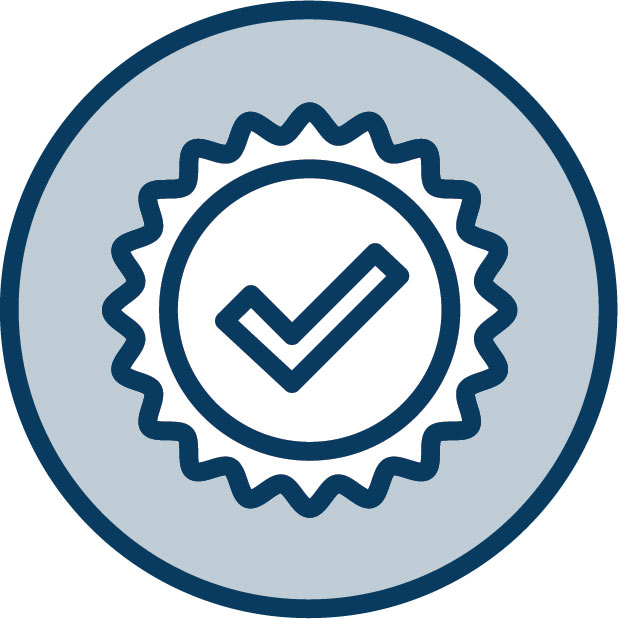Environmental and Toxic Torts—Claims Management of Emerging Environmental Issues
Over the past few years, there have been several emerging trends that have gained the attention of the environmental liability insurance industry. These include an increased awareness and focus on environmental regulations, as well as the discovery of newly emerging contaminants – both regulated and unregulated. Specific site pollution exposures also include new concerns such as bacteria, silica, mold, legionella and indoor air quality.
As a result, environmental insurance has become a higher priority for many insureds involved in merger and acquisition transactions, brownfield development and general construction projects. As the market for environmental insurance continues to mature and expand, associated environmental liability issues have increased, and a growing book of environmental claims has developed. Understanding and managing the risks and exposures involved with these environmental claims must be a key focus for any successful risk management strategy to succeed.
What are Emerging Environmental Issues?
Environmental issues have been “emerging” for 30+ years as technology and regulatory developments have competed to keep pace with each other. Many environmental regulations on the books today are a result of one or more “major” environmental catastrophes or issues (examples include: Love Canal – Superfund; Exxon Valdez spill – Oil Pollution Act and Natural Resource Damages). It seems hard to believe that new issues are on the horizon, but in fact, we continue to see new concerns develop which have the potential to influence an insured’s liability. Issues can be classified as new contaminants that may not have been previously detected or regulated, or older environmental exposures that are “re-emerging” due to new toxicological studies or re-interpretation of how chemicals and other contaminants behave in the subsurface. According to the US Department of Defense (USDOD 2009) “contaminants of emerging concern are those chemicals that present known or potentially unacceptable human health effects or environmental risk, and either: 1) do not have regulatory cleanup standards, or (2) regulatory standards are evolving due to new science, detection capabilities or pathways, or both.”
Characteristics of Emerging Contaminants – New Contaminants
As an example of both of these issues, we can look at two “new” contaminants, which are, in most cases, quite old: PFAS and 1,4-dioxane. They are considered “new” because they are newly labeled as contaminants.
State and federal attention has recently turned to Poly and Perfluoroalkyl substances, more commonly known as “PFAS”. PFAS are a complex family of more than 3,000 manmade fluorinated organic chemicals, which have been extensively manufactured and used worldwide. These substances have unique physical and chemical properties that include repelling water, acting as a surfactant, repelling oil and more. Both PFAS and 1,4-dioxane were targeted compounds for detection in drinking water systems as part of the Safe Drinking Water Act Unregulated Contaminant Monitoring rule. This program is used to collect data for contaminants that are suspected to be present in drinking water and do not have health-based standards set under the Safe Drinking Water Act (SDWA). The sources of PFAS are varied, but four common source areas are fire training/fire response sites, industrial sites, landfills, and wastewater treatment plants/bio solids. The chemical 1,4-dioxane is a synthetic industrial chemical that is completely soluble in water. It is likely found at many sites contaminated with certain chlorinated substances (particularly 1,1,1,-trichloroethane) because of its widespread use as a stabilizer for solvents.
Due to the prevalence of PFAS and 1,4-dioxane detections in many public and private water supply systems, state and federal agencies are developing programs to investigate and remediate these “new” contaminants. However, a federal mandated acceptable clean-up level has not been defined for either compound, and in the absence of a federal standard, state agencies are promulgating their own levels for screening and clean-up. Sites that may have long histories of investigation and remediation are in some cases being re-opened for investigation of these emerging contaminants, including landfills that accepted PFAS waste, federal facilities (including closed bases) with fire training areas, and industrial facilities near drinking water supply wells or reservoirs that have been identified as contaminated, and chemical production facilities that historically used these chemicals in manufacturing.
Characteristics of Emerging Contaminants – Old Contaminants, New Rules
An example of an “old” contaminant that is getting a second look is vapor intrusion of volatile organic compounds. The presence of volatile organic compounds in in indoor air is the most recent example of a “known” contaminant that has become an emerging issue because of an evolution in the understanding of how chemicals migrate from the subsurface into indoor air. The awareness of vapor intrusion is also a result of more accurate chemical testing standards. Because of this, many sites that were previously closed under old regulatory standards are getting a new look – especially if the property is being redeveloped, or if a site is being transferred-- triggering new due diligence under current standards and awareness of environmental issues. The discovery of an unacceptable vapor intrusion issue can lead to further remediation costs, business interruption, property damage claims and associated legal defense.
Another contaminant which has been highly regulated for many years is lead -- especially in drinking water. With the recent Flint, Michigan water crisis, new standards are being proposed for lead levels in drinking water in both Michigan and other jurisdictions. New regulations have been passed requiring new testing of tap water at schools and day care centers (e.g. NY, CA), and in some jurisdictions requirements for complete removal and upgrade of aging water delivery systems and piping have been mandated.
Other examples of “known” issues that continues to evolve with respect to regulatory requirements and awareness are mold and microbial matter. In particular, in recent years, new requirements have been developed by the Center for Disease Control for water borne pathogen prevention, detection, and response, in an effort to prevent outbreaks of Legionnaires disease, especially at medical facilities. With mold, greater awareness increases the frequency of mold claims, but because there is no defined “clean-up value”, determining the appropriate level of “clean” can be difficult for the insured and claims adjuster. Furthermore, there may be an increase in mold claims with the projected increase in severe weather events, and with hotter, wetter summers, if heating and ventilation systems are not properly designed, operated, or maintained. Other indoor air contaminants of potential concern that continue to “emerge” may include bacteria and viruses (as an example, Ebola).
The Intersection of Emerging Issues and Pollution Coverage and Claims
There are two primary types of stand-alone pollution policies available in the market today are site (or premises) liability policies, and contractor (or services) liability policies. In addition, pollution coverage may be found on other commercial policies such as general liability, property and builders risk. While emerging issues also can affect all of these insurance products, this article is focused mainly on the site (premises) policy.
Coverage and Underwriting Considerations
Coverage for emerging issues may be afforded under a site liability policy in a number of ways. Benefits of most site policies in the market today include coverage for bodily injury, property damage, legal expenses and clean-up costs resulting from pollution conditions associated with a covered location on a claims-made basis. They may also cover an insured’s pollution liability arising from non-owned disposal sites, transportation of products or wastes, business interruption, contingent business interruption, biological hazards and incidental contracting services.
In the case of an emerging contaminant, if a new contaminant requires investigation or clean-up, or if a third party claim is made due to an emerging issue, coverage may be afforded. As carriers become more aware of new contaminants and changing regulations, coverage for specific emerging contaminants may be excluded or otherwise restricted, and certain classes of businesses may be less likely to have full coverage, particularly if they are industries of concern. In addition, the application of “prior pollutants or pollution incident” – type restrictions may limit or exclude coverage for emerging contaminants.
In the case of an “old” issue that may be re-visited (such as vapor intrusion from a former dry cleaner), the more current the site information is, the more comfortable an underwriter may be with providing coverage.
Claims Coverage and Management
When it comes to a claim for an emerging issue, many of the same best practices apply: report early, document the damage, seek consent, and work with your claims adjuster. A few of the issues that may require unique approaches include:

Finding the right experts to support the claim. Not all consultants, attorneys, or contractors are skilled or knowledgeable in investigating or remediating an environmental claim that involves an emerging issue or contaminant.

Understanding and negotiating an end point. If there is no established government standard for an emerging contaminant, it can be more difficult to know “how far to go” in cleanup.

Managing public perception if there are potential off-site impacts or third party concerns.

Keeping up-to-date with emerging regulations, guidance and standards.
Solutions and Recommendations
There is no silver bullet for emerging environmental issues when it comes to obtaining coverage or responding to a claim. However, continued awareness of proposed regulations and state and federal initiatives may allow carriers and their insureds to respond and appropriately manage the risk, potential occurrence and severity of claims. As a buyer or developer of a new property, proper due diligence may provide regulatory protections under CERCLA, as a bona fide prospective purchaser, and may also help identify any emerging contaminants or issues that may adversely affect the property’s value or future projected use. Carriers and insureds should carefully evaluate how new environmental regulations and emerging contaminants may affect their covered locations. Pollution liability insurance products may provide protection for new issues that can occur during the policy term, either through remediation re-opener coverage or through other coverages.
From a claims management standpoint – especially when it comes to “new contaminants” – the landscape can change quickly. New clean-up standards are being promulgated on an almost daily basis and the emerging issues are being “tested” in case law as well.


Sara Brothers
Sara is a vice president with Great American’s Environmental Division. She brings over 30 years of environmental consulting and construction management experience to Great American. Sara’s background is as a senior geologist with extensive consulting and industry experience in the petroleum, industrial, commercial, and government sectors. Sara serves as the director of technical support and training. She is based out of our New York office.